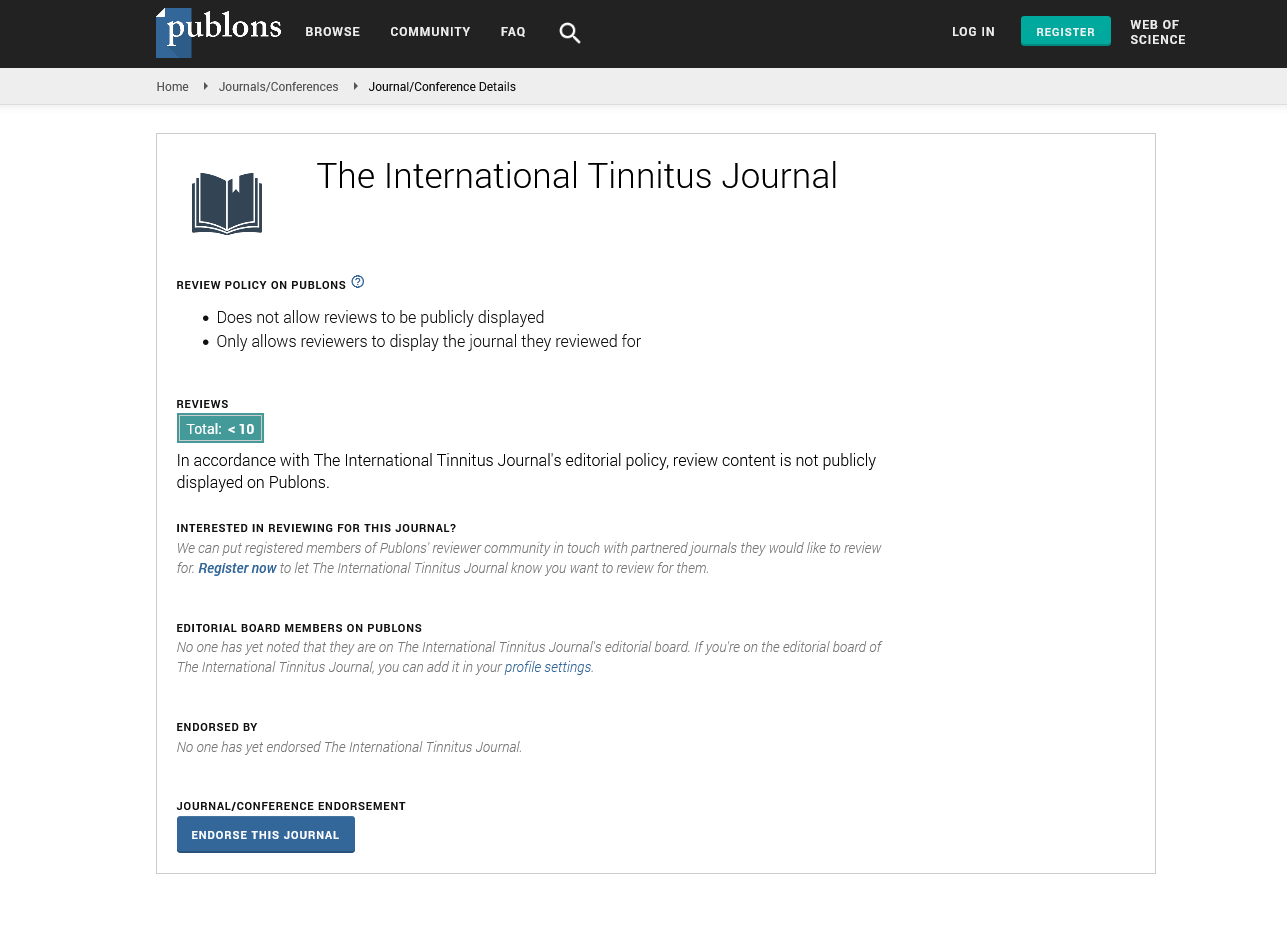The International Tinnitus Journal
Official Journal of the Neurootological and Equilibriometric Society
Official Journal of the Brazil Federal District Otorhinolaryngologist Society
ISSN: 0946-5448

Google scholar citation report
Citations : 12717
The International Tinnitus Journal received 12717 citations as per google scholar report
The International Tinnitus Journal peer review process verified at publons
Indexed In
- Excerpta Medica
- Scimago
- SCOPUS
- Publons
- EMBASE
- Google Scholar
- Euro Pub
- CAS Source Index (CASSI)
- Index Medicus
- Medline
- PubMed
- UGC
- EBSCO
Abstract
Objective Pulse-Synchronous "Essential" Tinnitus due to Narrowing of the Transverse Dural Venous Sinus
Author(s): Eric J. Russell, Brian J. De Michaelis, Richard Wiet, Joel MeyerSubjective tinnitus is a common problem with many etiologies. Objective tinnitus, in which the sound is perceived by both the patient and the examiner, is less common. Objective tinnitus of the vascular type, in which a pulse synchronous bruit is heard by an independent observer, is frequently related to an underlying arterial or arteriovenous malformation, most commonly a dural arteriovenous fistula (DAVF) involving the transverse and sigmoid sinuses. The remaining cases are usually termed "essential" vascular tinnitus, and are presumed to have a venous etiology. In these cases, the audible noise is generally assumed to be produced within the sino-jugular connection, or within an enlarged jugular bulb. We present four documented cases of objective pulse synchronous tinnitus due to focal narrowing (acquired and developmental) of the mid-portion of the transverse dural sinus. In all cases, a bruit was audible directly over a focal constriction in the sinus, demonstrated by cerebral angiography or direct catheter venography. In one case, selective venography revealed a distensible sinus narrowing, associated with ajet of contrast marking fast flow within a developmental sinus segmentation. In another case, a loud pulse synchronous bruit was heard directly over a focal transverse sinus stenosis, which was detected by angiography at the site of a vascular surgical clip. In this case, magnetic resonance (MR) falsely predicted sinus occlusion. In two other cases, an audible bruit was also heard directly overlying a narrowed transverse sinus, seen in the venous phase of angiography. Transverse sinus stenosis is an unappreciated cause of objective pulsatile tinnitus, and we believe that this mechanism may underlie many cases of "essential" or venous etiology tinnitus not otherwise anatomically explained. Non-invasive testing, computed tomography (CT) and MR and non-directed angiography may overlook it. Conventional catheter arteriography or venography should be performed in such cases, with attention to the dural sinuses, if other tests fail to define the anatomic basis of the audible bruit.
PDF

